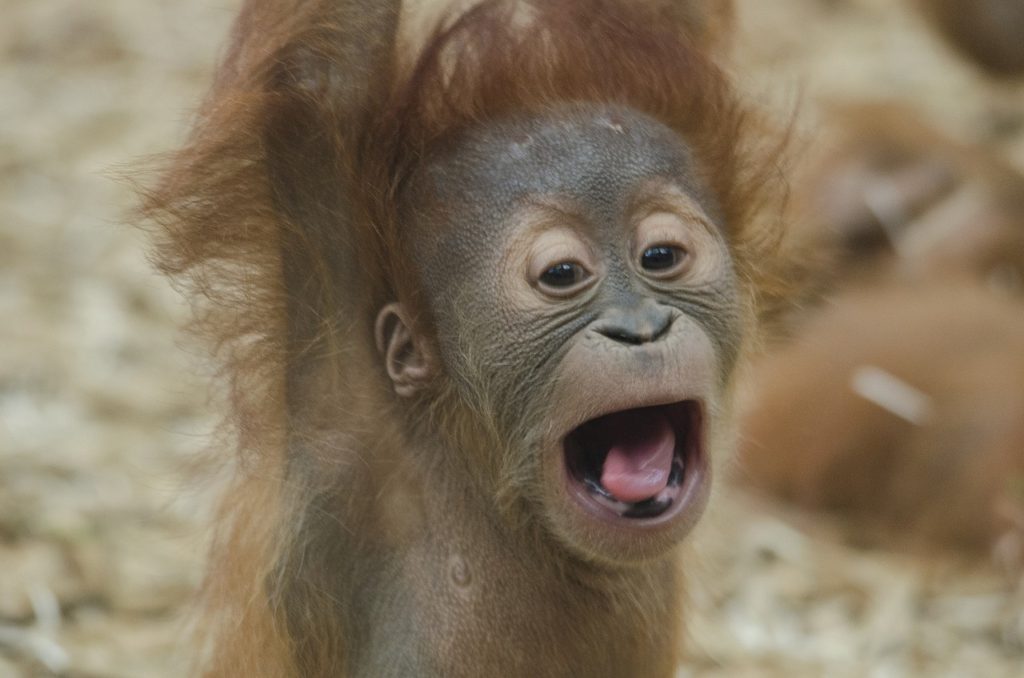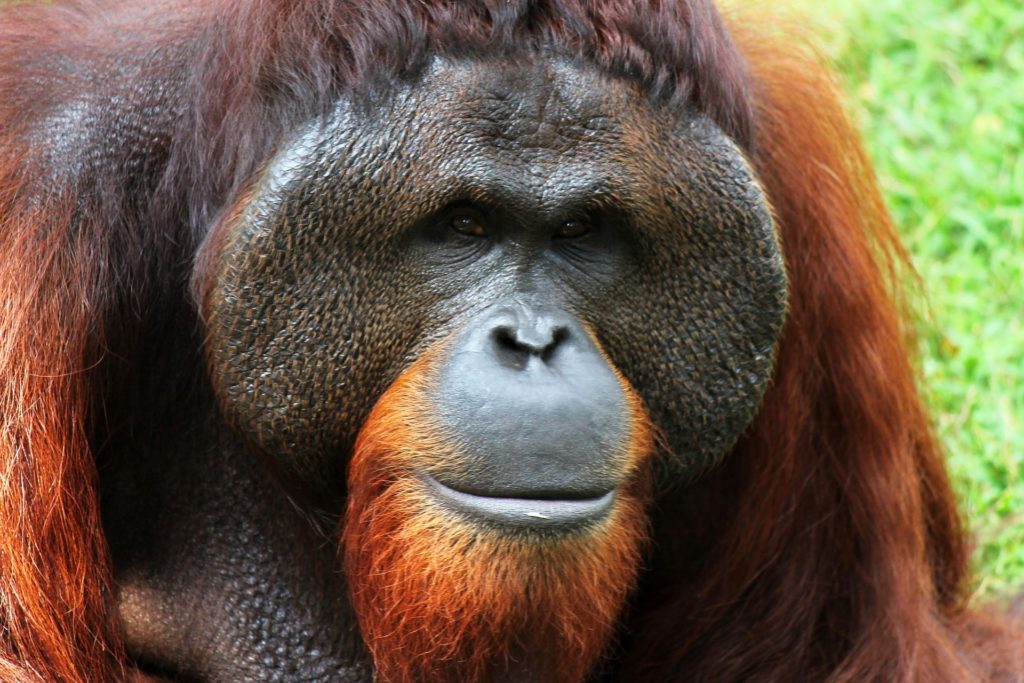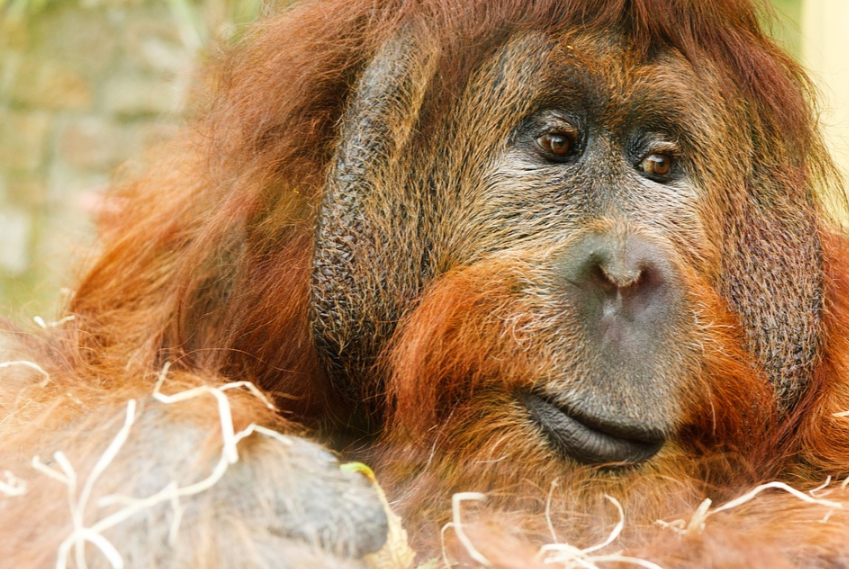‘Tis the season of sweets, and as the days become shorter and there’s a chill in the air we will soon be graced with the presence of little ghouls, goblins, and minions, rapping on the door or ringing the bell: “Trick or treat! Give me something good to eat!” they’ll exclaim. But what is good to eat? To trick-or-treaters it’s candy, and loads of it, but what is one of the most common ingredients in these delectable goodies they demand? Palm oil.
Palm oil comes from a species of palm tree (Elaeis guineensis), which originated in Africa. African palm as it is known, has become more prevalent outside of Africa, particularly in the tropics across the globe. The palm is planted in “monocultures,” or single species crop plantations, which first require the leveling of massive plots of indigenous forest or rainforest. With each piece of candy, more and more rainforest is destroyed as entire ecosystems are lost and replaced by the crop. Farms can be found in South America and Africa, but are causing arguably the most unimaginable amount of damage all over Southeast Asia (particularly in the biodiverse regions of Malaysia, Borneo, and Sumatra) where they are only growing in size and number. For species like the orangutan, found only in Southeast Asia, this unsustainable demand will cause them to disappear from the face of the earth.

The high demand for unsustainable palm oil is not only a result of its use as an ingredient in candy, though that is certainly a huge part of the problem. Palm oil is also used in an array of food products from peanut butter to biscuits, and can even be found in household goods, bath products and cosmetics, just to name a few. It is often used as a cheap replacement to cocoa butter or vegetable oil and is in most everyday products. Unsustainable Palm oil is used as biofuel, as well, as biofuels have become a popular replacement for fossil fuels because it is argued that they reduce greenhouse gas emission. Yet, if palm oil plantations for biofuel are not managed sustainably, this alternative is counterproductive. The carbon stored in plants is released into the atmosphere during deforestation, which occurs when land is cleared for those very palm oil plantations. But why the rapid expansion of unsustainable palm oil farms and how does that relate to great apes?
Increased demand for unsustainable palm oil has led to a rapid expansion of palm oil farms, and governments are usually on the side of this growth. This is mainly because as human populations increase, so do our consumer demands, and with Americans consuming twenty two pounds per person (times a population of over 300 million) of chocolate each year (and Europeans consuming twenty four pounds), the demand is enormous (Mic). Economic factors are the driving mechanisms for these expansions because higher value is placed on land used for palm oil than on land used for conservation in many nations. Without restrictions on the creation or expansion of these farms, the orangutan and other wildlife are left without a home and are often killed in the process or taken for the illegal pet trade.

The most devastating impact palm oil plantations have is the reduction of biodiversity in the tropics, overall species loss and the suffering of thousands of individual animals. This is extremely unfortunate because the tropics serve as biodiversity hotspots, which support more than half of the world’s endemic (found nowhere else) plant species and nearly 43% of endemic bird, mammal, reptile and amphibian species (CI). Some scientists are still discovering species in these regions, while others are forced to calculate the increasing rate of extinction.
Between habitat modification, habitat loss, and/or habitat fragmentation, the behavior, biology, and ecology of tropical species are in serious trouble. Primates appear to be among the most vulnerable, due to their relatively long life histories and complex behavioral ecology, and it is often difficult for populations to recuperate after being decimated by habitat loss and hunting. Among the species being driven to the extremes of extinction because of palm oil are those near to our hearts – like orangutans (a great ape species like chimpanzees and humans) which are listed as critically endangered on the IUCN Red List in large part because of this industry.
 What can I do?
What can I do?
There are plenty of options in the store which either do not contain palm oil or use only sustainable palm oil. Groups like the Great Ape Survival Partnership and UNEP have been working with the Palm oil industry to create criteria for sustainable development. Make informed and responsible consumer decisions when purchasing candy this Halloween, and in everyday life, to give these species a fighting chance at survival.
- Look for the RSPO label to ensure you purchase products made with certified sustainable palm oil.
- You can also try this Roots & Shoots 1-Click sustainable palm oil campaign to download the smart shopping app to help you navigate your palm oil choices!
We can prevent imminent extinction of great apes with these changes, and indeed we must.
References:
Ceballos, G., Ehrlich, P. R., Barnosky, A. D., García, A., Pringle, R. M., & Palmer, T. M. (2015). Accelerated modern human–induced species losses: Entering the sixth mass extinction. Science advances, 1(5), e1400253.
Cowlishaw, G., & Dunbar, R. I. (2000). Primate conservation biology. Chicago, IL: University of Chicago Press.
Fitzherbert, E. B., Struebig, M. J., Morel, A., Danielsen, F., Brühl, C. A., Donald, P. F., & Phalan, B. (2008). How will oil palm expansion affect biodiversity?. Trends in Ecology & Evolution, 23(10), 538-545.
Gaveau, D. L., Wich, S., Epting, J., Juhn, D., Kanninen, M., & Leader-Williams, N. (2009). The future of forests and orangutans (Pongo abelii) in Sumatra: predicting impacts of oil palm plantations, road construction, and mechanisms for reducing carbon emissions from deforestation. Environmental Research Letters, 4(3), 034013.
Kappeler, P. M., & van Schaik, C. P. (2002). Evolution of primate social systems. International Journal of Primatology, 23(4), 707-740.
Nantha, H. S., & Tisdell, C. (2009). The orangutan–oil palm conflict: economic constraints and opportunities for conservation. Biodiversity and Conservation, 18(2), 487-502.
Palm oil initiatives:
https://www.sustainablepalmoil.org/about/
https://whatispalmoil.weebly.com/

The Jane Goodall Institute is a global community conservation organization that advances the vision and work of Dr. Jane Goodall. By protecting chimpanzees and inspiring people to conserve the natural world we all share, we improve the lives of people, animals and the environment. Everything is connected—everyone can make a difference.







